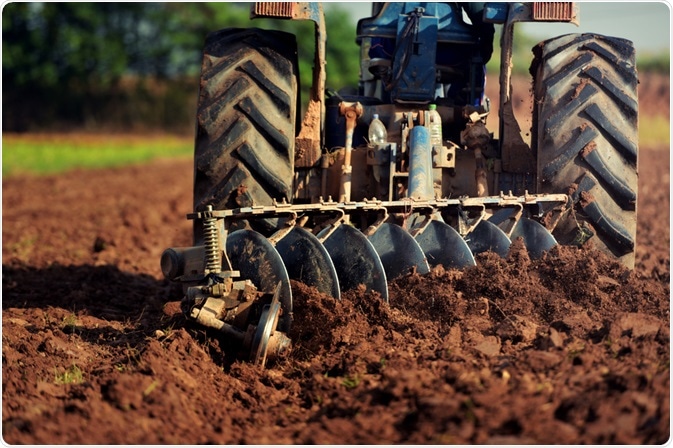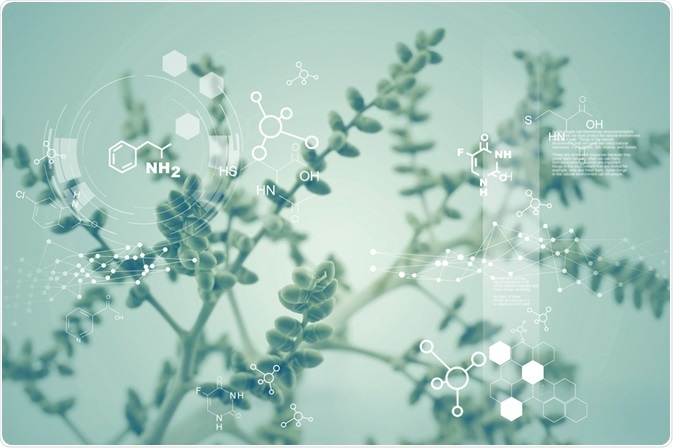Within the agricultural industry, bioinformatics has been used to expand the current understanding of various plant functions, protect plants against harmful stressors, and improve plant quality for human consumption.
 Bioinformatics in Agriculture" />
Bioinformatics in Agriculture" />
Agriculture. Image Credit: Somchai_Stock/Shutterstock.com
An overview of bioinformatics
Throughout the past several decades, an extensive amount of scientific data has been generated, particularly within the fields of molecular biology and genomics. Bioinformatics, which is a combination of multiple disciplines ranging from physics, mathematics, and behavioral sciences to engineering biology, statistics, and computer science, has been essential in determining how the data acquired from biological experiments are used.
By definition, bioinformatics is an interdisciplinary scientific area that applies information technology in the form of incisive computer tools to the processing and management of biological data. More specifically, bioinformatics is used to analyze and predict the structure and function of genomic content, biological sequence data, and macromolecules.
To date, bioinformatics has already had significant impacts on human health, the environment, energy, biotechnology, and the agricultural sector.
Genomics in agriculture
The term genome is used to describe the complete genetic material of an organism in terms of its nuclear deoxyribonucleic acid (DNA) content; however, it should be noted that other genetic information can be stored within organelles aside from the nucleus, which can include the genome of the mitochondria or the chloroplast, the latter of which is only present in plants.
The genomic analysis of eukaryotic species, which is typically confined to information present on chromosomal DNA, has expanded beyond studying the human genome for clinical applications to also sequencing the genomes of both plants and animals for agricultural purposes.
Plant genomics research endeavors, for example, are often aimed at reducing the cost associated with producing crops, improving the safety and quality of the food supply, developing superior processing abilities, and enhancing the effectiveness and efficiency of plant breeding practices.
Bioinformatics in agriculture
Within the field of agricultural genomics, or agri-genomics, bioinformatics is playing an increasingly important role in the collection, storage, and analysis of genomic data.
Some of the different ways in which bioinformatics tools and methods are used in agriculture, which is collectively referred to as agri-informatics, primarily include the improvement of plant resistance against both biotic and abiotic stressors and enhancement of the nutritional quality in depleted soils.
In addition to these purposes, gene discovery through the use of computer software has also allowed researchers to develop targeted methods for the improvement of seed quality, incorporate added micronutrients into plants for enhanced human health, and engineer plants with phytoremediation capabilities.

Plant genome analysis. Image Credit: PopTika/Shutterstock.com
Improving plant resistance
Rather than focusing on the genomic makeup of plants, insect genomics plays a primary role in identifying both the mechanisms responsible for biotic resistance in plants, as well as potential target sites. For example, studying the genome of Bacillus thuringiensis, which is a type of bacteria species that are commonly found in soil, has been of interest due to its production of proteins that are toxic to certain insects.
Several genes that have been isolated from Bacillus thuringiensis have been transferred to crops including cotton, maize, and potato to improve the plants’ defense against insect attacks, thereby reduce, or even eliminating, the use of certain insecticide treatments.
In addition to utilizing genomics to improve plant resistance against biotic stresses, various genomic approaches have also been used to enhance a plant’s ability to defend itself against abiotic stress. A plant’s roots are primarily responsible for its ability to resist the deleterious effects of abiotic stresses.
When the soil surrounding a plant’s roots is healthy and biologically diverse, the plant has a better chance of survival stressful conditions. While this may be true, plants are generally very sensitive to environmental changes like drought or extremely hot/cold temperatures and may therefore not adapt quick enough to these types of stresses.
To protect plants from succumbing to these types of conditions, both computational and in silico genomics technologies have been used to correlate the transcription factor and promotor regions to their gene-enzyme resistance to disease.
The identification of these genetic patterns can allow researchers to augment the immunity of plants by amplifying certain genes that are associated with better resistance mechanisms.
Enhancing the quality of soil
Nutritional genomics, which is otherwise known as nutrigenomics, is the analysis of the human genome and its relationship with nutrition and health. Within the agricultural industry, nutrigenomics is used to identify the genes of a particular plant species that can provide dietary interventions to diseases.
One example of how nutrigenomics has been applied to agriculture includes the transferring of genes that can increase iron, micronutrients, and vitamin A levels into the rice.
Since anemia and blindness, which are due to deficiencies in iron and vitamin A, respectively, can have intellectual impacts on individuals, the preemptive treatment with higher nutrient concentrations in rice can have significant effects.
Aside from assisting technologists to improve the nutritional quality of crops for human consumption, bioinformatics can also provide information on the presence of certain contaminants within soil. Most soils consist of highly complex microbial communities that, in turn, are made up of a diverse set of gene sequences.
The analysis of these sequences through processes like metagenomics sequencing has been used to detect the presence of potentially toxic heavy metals like free iron and aluminum in the hope of eventually eliminating these elements from future soil products.
Available tools
Plant genome analysis is of great economic importance for not only the agricultural industry but also for the overall maintenance of animal and human health. Many different bioinformatics tools have been developed to assist in the gathering, consolidation, and analysis of the vast amount of information that is available on these living systems.
Some of the most widely used plant/crop bioinformatics online databases include BGI Rice Information System, Gateway of Brassica Genome, ChloroplastDB, The Crop Expressed Sequence Tag (CR-EST_ database, CyanBase, the European Molecular Biology Laboratory (EMBL) nucleotide sequence database, and many more.
References and Further Reading
- Singh, V. K., Singh, A. L., Chand, R., & Kushwaha, C. (2011). Role of Bioinformatics in Agriculture and Sustainable Development. International Journal of Bioinformatics Research 3(2); 221-226. Available from: http://oaji.net/articles/2014/31-1394879461.pdf.
- Aslam Z., Khattak J.Z.K., Ahmed M., Asif M. (2017) A Role of Bioinformatics in Agriculture. In: Ahmed M., Stockle C. (eds) Quantification of Climate Variability, Adaptation, and Mitigation for Agricultural Sustainability. Springer, Cham. doi:10.1007/978-3-319-32059-5_17.
- L09: The role of bioinformatics in agriculture [Online]. Available from: https://biotechgo.org/training/jsep/el-basic?view=article&id=146:lo9&catid=38.
Further Reading